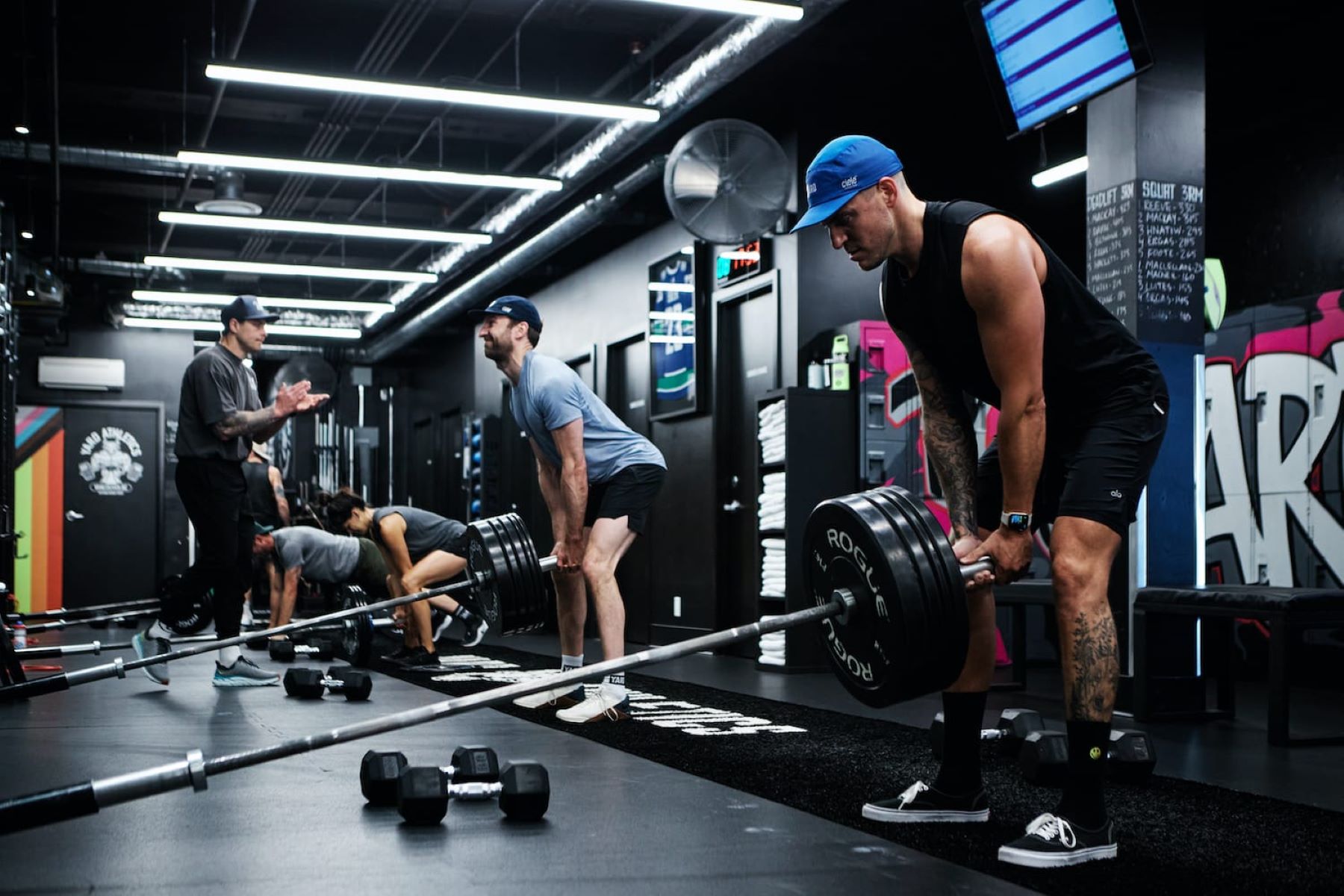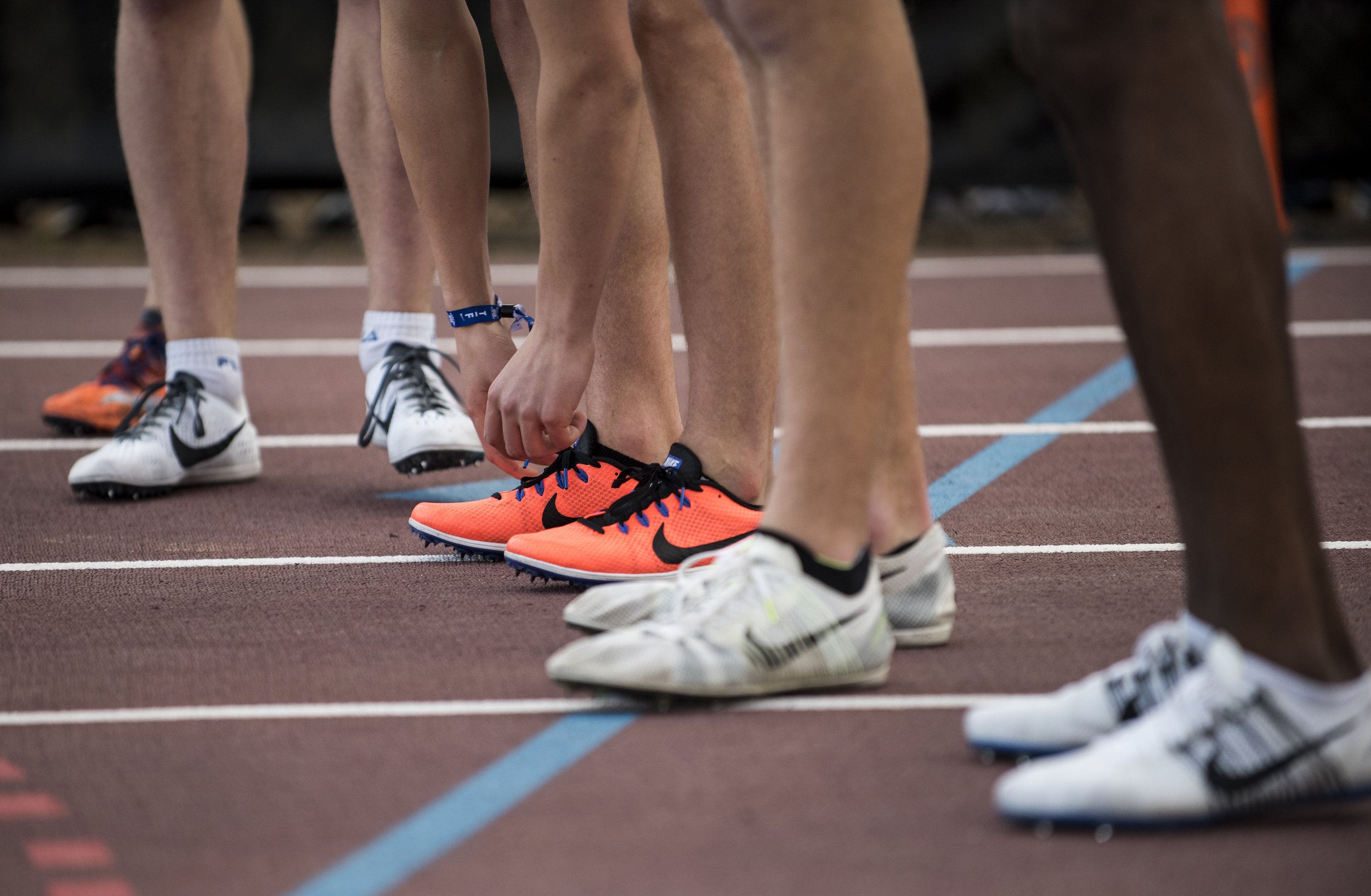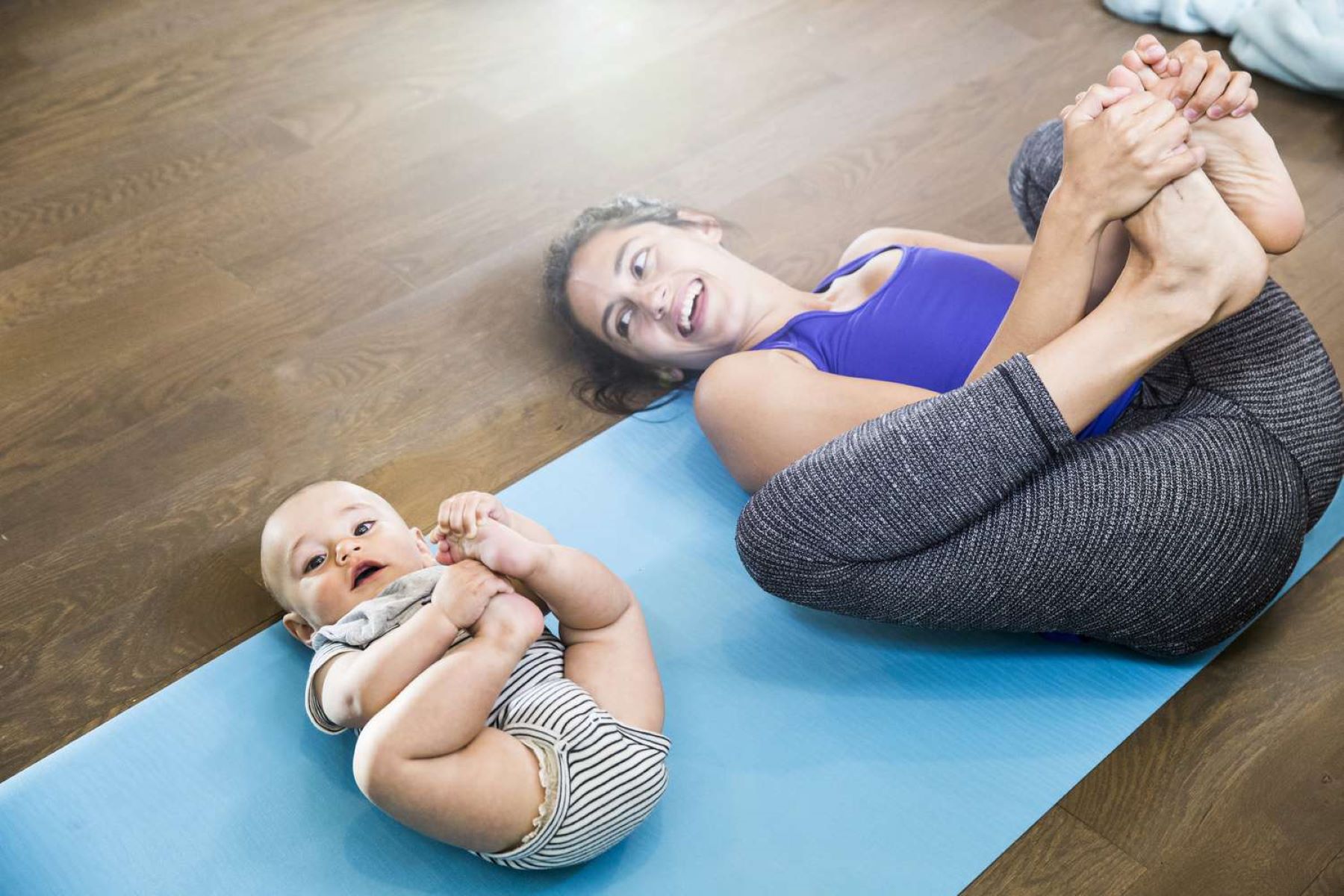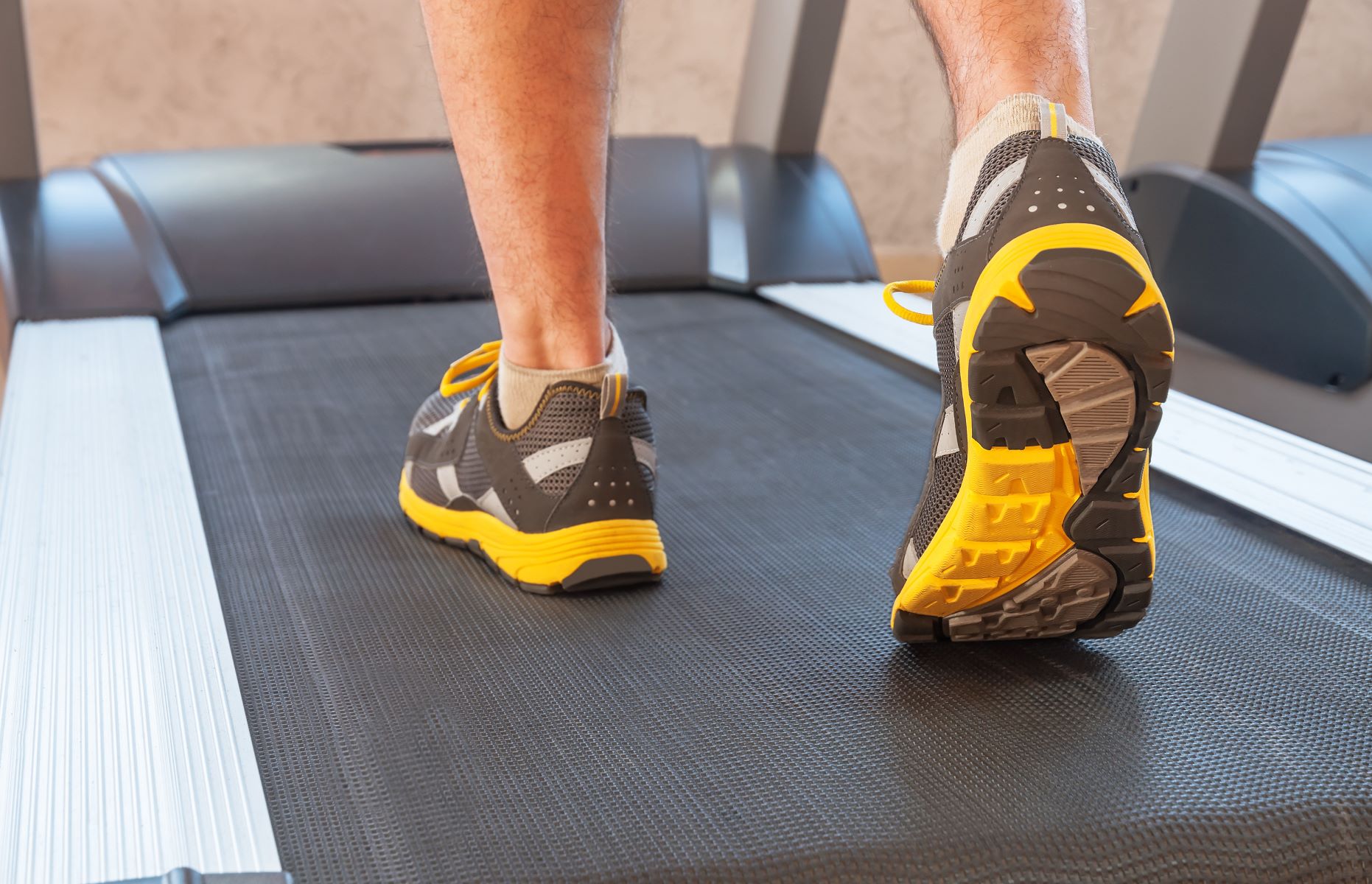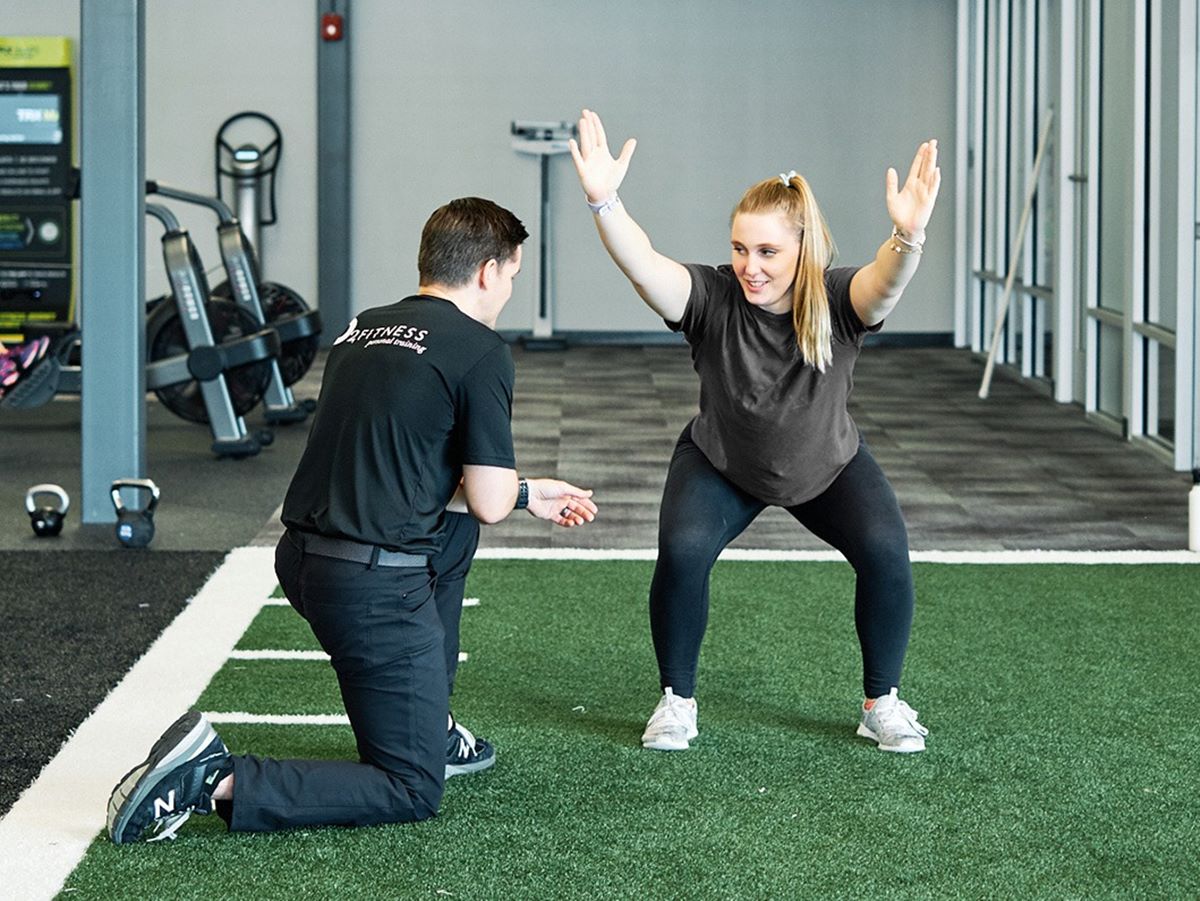

Featured
What Is A Corrective Exercise Specialist
Published: September 28, 2023
Featured: Learn what a Corrective Exercise Specialist does and how they can help you overcome movement limitations and injuries. Find out more here.
Introduction
Are you interested in the field of fitness and exercise? Do you have a passion for helping others improve their physical well-being? If so, you may want to consider becoming a Corrective Exercise Specialist.
Corrective Exercise Specialists play a crucial role in helping individuals address muscular imbalances, movement dysfunctions, and postural issues. They provide targeted exercises and techniques that help clients recover from injuries, prevent future injuries, and optimize their overall movement patterns.
In this article, we will explore the responsibilities of a Corrective Exercise Specialist and the impact they have on their clients’ lives. We will also delve into the education and certification requirements, the skills and knowledge required to succeed in this field, and the common challenges faced by professionals in this role.
Whether you are a seasoned fitness professional looking to specialize, or someone considering a career change, understanding the role of a Corrective Exercise Specialist can help you make an informed decision about pursuing this rewarding profession.
So, let’s dive in and explore the fascinating world of Corrective Exercise Specialists and how they make a difference in the lives of their clients.
Role of a Corrective Exercise Specialist
A Corrective Exercise Specialist is a fitness professional who specializes in identifying and addressing musculoskeletal imbalances, movement dysfunctions, and postural issues in clients. They utilize their expertise to develop personalized programs that help clients improve their movement quality, reduce pain, and enhance their overall performance.
One of the key responsibilities of a Corrective Exercise Specialist is conducting thorough assessments to identify any underlying issues. This involves analyzing posture, movement patterns, muscle imbalances, and joint restrictions. By understanding the root cause of these issues, they can design targeted exercise programs to address them.
Corrective Exercise Specialists also work closely with various healthcare professionals, such as physical therapists and chiropractors, to ensure a comprehensive approach to client care. They collaborate to provide integrated strategies that promote optimal recovery, rehabilitation, and injury prevention.
Another important aspect of a Corrective Exercise Specialist’s role is educating clients about proper movement mechanics and body awareness. They teach clients how to perform exercises correctly to maximize effectiveness and minimize the risk of injury. They also provide guidance on incorporating corrective exercises into daily routines to reinforce proper movement patterns.
Furthermore, Corrective Exercise Specialists often work with clients who are recovering from injuries or have chronic pain conditions. They develop specialized programs that help clients regain strength, mobility, and function while minimizing discomfort. By tailoring exercises to the specific needs of each client, they promote a safe and effective path to recovery.
Beyond rehabilitation, Corrective Exercise Specialists also play a crucial role in injury prevention. They assess clients’ movement and identify areas of weakness or instability that could potentially lead to injuries. By targeting these areas with corrective exercises, they help clients build a strong foundation and minimize the risk of future injuries.
Overall, the role of a Corrective Exercise Specialist is multi-faceted. They serve as educators, evaluators, and program designers, working closely with clients to improve their movement quality, restore function, and enhance overall well-being.
Education and Certification Requirements
As a Corrective Exercise Specialist, obtaining the necessary education and certifications is crucial to excel in this field. While the specific requirements may vary depending on the country or organization you intend to work with, there are common prerequisites to consider.
First and foremost, completing a high school diploma or equivalent is typically required to pursue a career as a Corrective Exercise Specialist. This provides a foundation in basic knowledge and skills necessary for further education and training.
Next, it is advisable to pursue a degree or certification in a related field, such as exercise science, kinesiology, or physical therapy. These programs provide a comprehensive understanding of human anatomy, physiology, movement mechanics, and injury management. They also offer valuable hands-on experience through internships and practical training.
After obtaining a relevant degree or certification, aspiring Corrective Exercise Specialists usually pursue specialized certifications from recognized organizations. These certifications demonstrate expertise in the field and enhance professional credibility.
One widely recognized certification for Corrective Exercise Specialists is the National Academy of Sports Medicine (NASM) Corrective Exercise Specialist (CES) certification. This certification focuses on assessing movement dysfunctions, developing targeted exercise programs, and integrating corrective strategies into clients’ fitness routines.
Other reputable organizations that offer certifications in corrective exercise include the American Council on Exercise (ACE), the National Strength and Conditioning Association (NSCA), and the Corrective Exercise Institute.
It is important to note that certification requirements typically include completing a comprehensive exam and fulfilling specific continuing education requirements to maintain the certification. This ensures ongoing professional development and keeps practitioners up-to-date with the latest research and techniques in the field.
Additionally, pursuing continuing education courses, workshops, and seminars can further expand knowledge and skills in corrective exercise. This demonstrates a commitment to staying current in the field and elevates the level of expertise.
Overall, a combination of formal education, specialized certifications, and ongoing professional development is essential for those aspiring to become respected Corrective Exercise Specialists. It demonstrates competence, dedication, and a commitment to providing high-quality care to clients.
Skills and Knowledge
Being a successful Corrective Exercise Specialist requires a unique set of skills and a deep understanding of human anatomy, movement mechanics, and injury management. Here are some key skills and knowledge areas necessary for this role:
- Anatomy and Biomechanics: A strong foundation in anatomy is crucial for assessing movement patterns and identifying muscle imbalances. Understanding how the body moves and functions allows Corrective Exercise Specialists to design effective programs tailored to individual needs.
- Evaluation and Assessment Techniques: Corrective Exercise Specialists must be skilled in conducting assessments to identify movement dysfunctions and imbalances. This involves using various evaluation techniques, such as postural analysis, movement screens, and range of motion assessments.
- Exercise Prescription: Having the ability to design targeted exercise programs based on assessment findings is essential. Corrective Exercise Specialists must possess the knowledge to select appropriate exercises that address specific muscle imbalances, mobility limitations, and stability issues.
- Knowledge of Injuries and Conditions: A comprehensive understanding of common injuries and conditions, such as back pain, knee injuries, and postural deviations, allows Corrective Exercise Specialists to design appropriate interventions and exercises to address these issues.
- Adaptability and Flexibility: Each client is unique, and their corrective exercise needs may vary. Corrective Exercise Specialists must be able to adapt and modify programs to accommodate individual differences and preferences.
- Communication and Interpersonal Skills: Building rapport and effectively communicating with clients is vital. Corrective Exercise Specialists must be able to explain complex concepts in a clear and understandable manner, while also providing motivation and support.
- Observation and Analytical Skills: A keen eye for detail and the ability to observe movement patterns and identify compensations is essential. Corrective Exercise Specialists must be able to analyze movement in real-time and make adjustments accordingly.
- Continuing Education: Staying current with the latest research, trends, and techniques is vital for ongoing professional growth. Corrective Exercise Specialists should demonstrate a commitment to continuing education and seek out opportunities for further development.
Developing these skills and acquiring the necessary knowledge takes time, commitment, and hands-on experience. Engaging in practical training, working with mentors, and continuously expanding knowledge through research and education will help Corrective Exercise Specialists excel in their role.
By combining these skills with a passion for helping others and a genuine desire to improve clients’ overall well-being, Corrective Exercise Specialists can make a significant impact in the field of fitness and rehabilitation.
Assessment and Evaluation Techniques
As a Corrective Exercise Specialist, having the ability to accurately assess and evaluate clients is essential for designing effective and targeted exercise programs. Here are some commonly used assessment and evaluation techniques:
- Postural Analysis: Postural analysis involves observing a client’s standing, sitting, and moving posture to identify any deviations or imbalances. This assessment helps to identify areas of weakness or compensation patterns that may contribute to movement dysfunction or pain.
- Movement Screens: Movement screens assess the quality of movement through various fundamental patterns, such as squatting, lunging, and bending. These screens help identify any limitations, asymmetries, or compensations in the client’s movement patterns.
- Range of Motion Assessments: Range of motion assessments evaluate the client’s ability to move each joint through its full range. They help identify any restrictions or limitations in joint mobility, which may contribute to movement dysfunction or imbalances.
- Manual Muscle Testing: Manual muscle testing is used to assess the strength and activation patterns of specific muscles. By evaluating the client’s ability to generate force and identifying weak or inhibited muscles, corrective exercises can be tailored to address these imbalances.
- Flexibility and Mobility Tests: Flexibility and mobility tests assess the range of motion at specific joints or muscle groups. They help identify any tightness or restrictions that may impact movement patterns and contribute to muscle imbalances or compensations.
- Palpation and Joint Assessments: Palpation and joint assessments involve manually evaluating the client’s joints, ligaments, and soft tissues for any signs of inflammation, tenderness, or abnormalities. This provides valuable information about the health and integrity of the musculoskeletal system.
These assessment and evaluation techniques allow Corrective Exercise Specialists to gather valuable information about their clients’ movement patterns, imbalances, and limitations. It helps them create individualized programs that target specific areas to improve overall movement quality and address any underlying issues.
It is important to note that these assessments should be performed by professionals with the necessary qualifications and expertise. The results of these assessments form the foundation for developing a personalized corrective exercise program that addresses the unique needs of each client.
By utilizing these techniques and regularly re-evaluating clients, Corrective Exercise Specialists can track progress, make necessary adjustments to the program, and ensure that clients are progressing towards their goals effectively.
Through a comprehensive assessment and evaluation process, Corrective Exercise Specialists can gain valuable insights into their clients’ movement patterns, identify areas of improvement, and develop targeted exercise programs that promote optimal movement quality and help clients achieve their desired outcomes.
Program Design and Implementation
Designing and implementing effective corrective exercise programs is a key responsibility of a Corrective Exercise Specialist. These programs are tailored to address the specific needs and goals of each client. Here are the key steps involved in program design and implementation:
- Assessment Findings Integration: The first step is to analyze the assessment findings and identify the movement dysfunctions, muscle imbalances, and postural issues that need to be addressed. This information serves as a blueprint for creating a personalized program.
- Exercise Selection: Based on the assessment findings, Corrective Exercise Specialists select specific exercises that target the identified imbalances and movement dysfunctions. These exercises are chosen to improve strength, flexibility, mobility, and stability in the relevant muscles and joints.
- Progression and Regression: Corrective Exercise Specialists consider the client’s current fitness level and ability to perform the exercises. They develop progressions and regressions to ensure exercises are challenging yet safe and appropriate for the client’s abilities. This allows for gradual progression as the client’s strength and stability improve.
- Individualization: Programs are customized to meet the unique needs and goals of each client. Corrective Exercise Specialists take into account any pre-existing conditions, injuries, or limitations. They modify exercises or include alternatives to accommodate individual differences and promote successful program adherence.
- Frequency and Duration: Corrective exercise programs typically involve regular sessions to optimize results. The frequency and duration of each session depend on the client’s availability, goals, and the severity of their movement dysfunctions. Regular reassessments help determine when and how to progress the program.
- Instruction and Technique: Corrective Exercise Specialists play a crucial role in teaching clients proper exercise technique and ensuring correct form and execution. They provide clear instructions and demonstrations to ensure clients perform exercises safely and effectively.
- Client Education and Empowerment: Corrective Exercise Specialists educate their clients about the purpose and benefits of each exercise. They help clients understand how the exercises contribute to improving their movement quality and overall function. This empowers clients to take an active role in their own recovery and long-term well-being.
Implementing a corrective exercise program involves guiding clients through each exercise session, monitoring their technique, and providing ongoing support and motivation. Corrective Exercise Specialists keep track of their clients’ progress and adjust the program as required to ensure continued improvement.
The ultimate goal of program design and implementation is to help clients restore functional movement patterns, reduce pain and discomfort, and improve overall physical performance. By designing personalized programs that target their unique needs, Corrective Exercise Specialists empower their clients to achieve optimal movement quality and reach their fitness and wellness goals.
Common Corrective Exercises
Corrective exercises are specific movements and exercises that are designed to address muscle imbalances, movement dysfunctions, and postural issues. Here are some common corrective exercises that Corrective Exercise Specialists often incorporate into their programs:
- Glute Bridge: The glute bridge is an exercise that targets the gluteal muscles, specifically the gluteus maximus. It helps activate and strengthen the hip extensors, which can be weak in individuals with sedentary lifestyles or those who spend long hours sitting.
- Clamshells: Clamshells focus on activating the external rotators of the hips, such as the gluteus medius. This exercise helps correct hip instability and strengthen the muscles responsible for maintaining proper alignment and stability in the lower body.
- Plank Variations: Plank variations, such as the front plank and side plank, target the core muscles, including the transverse abdominis, rectus abdominis, and obliques. These exercises improve core stability, which is essential for maintaining optimal posture and preventing lower back pain.
- Shoulder External Rotation: Shoulder external rotation exercises, using resistance bands or dumbbells, help strengthen the rotator cuff muscles. These exercises are beneficial for individuals with shoulder instability or imbalances, such as those who frequently engage in overhead activities or have poor posture.
- Scapular Retraction: Scapular retractions involve squeezing the shoulder blades together to activate the muscles responsible for proper scapular positioning. This exercise helps correct rounded shoulder posture and strengthens the muscles that support the upper back and neck.
- Hip Flexor Stretches: Tight hip flexors are common in individuals who spend prolonged periods sitting. Stretching exercises such as lunges or kneeling hip flexor stretches can help lengthen and improve flexibility in the hip flexor muscles, reducing the risk of lower back pain and postural imbalances.
- Single-Leg Balance Exercises: Single-leg balance exercises are beneficial for improving stability and addressing muscle imbalances in the lower body. These exercises challenge the proprioceptive system and activate the small stabilizing muscles of the ankle, knee, and hip.
- Thoracic Mobility Exercises: Thoracic mobility exercises, such as foam rolling or cat-camel exercises, help improve mobility in the thoracic spine, reduce stiffness, and enhance overall spinal movement. These exercises can be especially beneficial for individuals with poor posture or restricted upper body mobility.
It is important to note that the selection of corrective exercises may vary depending on each individual’s specific needs and assessment findings. Corrective Exercise Specialists design programs that are tailored to address each client’s unique imbalances and movement dysfunctions.
By incorporating these common corrective exercises into personalized programs, Corrective Exercise Specialists help clients restore balance, improve movement quality, and reduce the risk of future injuries. These exercises, when performed consistently and with proper form, can have a significant impact on overall function and well-being.
Working with Clients and Communication Skills
Effective communication and the ability to establish a strong rapport with clients are essential skills for Corrective Exercise Specialists. Building trust and maintaining open lines of communication are crucial for successful client interactions. Here are key considerations when working with clients and honing communication skills:
- Active Listening: Taking the time to actively listen to clients is vital. It allows Corrective Exercise Specialists to truly understand their concerns, goals, and any challenges they may be facing. Through active listening, they can tailor their approach and demonstrate empathy and support.
- Empathy and Compassion: Demonstrating empathy and compassion fosters a positive and supportive client-trainer relationship. It helps clients feel understood and motivated to work towards their goals. Corrective Exercise Specialists should create a safe and non-judgmental environment where clients feel comfortable sharing their struggles and concerns.
- Clear and Concise Communication: Corrective Exercise Specialists should be able to effectively communicate complex concepts in a clear and understandable manner. They should explain the purpose and benefits of corrective exercises, ensuring clients understand the reasoning behind each movement they perform. Using simple language and visual aids can help facilitate comprehension.
- Motivational Skills: Motivating clients is a fundamental aspect of working in the fitness industry. Corrective Exercise Specialists should inspire and encourage clients throughout their journey. They can set realistic goals, celebrate achievements, and provide ongoing support and reassurance to keep clients motivated and engaged.
- Adaptability: Each client is unique with individual preferences, communication styles, and learning abilities. Corrective Exercise Specialists should be adaptable and flexible in their communication approach, tailoring their methods to suit each client’s needs. They may need to modify verbal cues, use visual demonstrations, or provide written instructions, depending on what works best for the client.
- Feedback and Progress Tracking: Providing regular feedback helps clients understand their progress and highlights areas for improvement. Corrective Exercise Specialists should offer constructive feedback on proper form, technique, and progress towards goals. Tracking progress through measurements, assessments, or visual feedback can boost motivation and reinforce the value of the corrective exercise program.
- Professionalism and Boundaries: Maintaining a professional working relationship and establishing clear boundaries is vital. Corrective Exercise Specialists should establish guidelines for communication, session scheduling, and client-trainer boundaries. They should also adhere to ethical standards, respecting client confidentiality and privacy.
Developing strong communication skills and effectively working with clients allows Corrective Exercise Specialists to understand their specific needs, provide appropriate guidance, and motivate them towards positive change. By creating a trusting and supportive environment, Corrective Exercise Specialists can foster long-term client success and satisfaction.
Benefits of Corrective Exercise
Corrective exercise offers numerous benefits for individuals of all fitness levels. Whether recovering from an injury, seeking to improve movement patterns, or aiming to enhance physical performance, implementing corrective exercise programs can have a positive impact. Here are some of the key benefits of corrective exercise:
- Injury Prevention: Corrective exercise helps identify and address imbalances and movement dysfunctions that can lead to injuries. By targeting weak muscles and improving stability and alignment, individuals can reduce the risk of injuries during physical activities or everyday movements.
- Improved Movement Quality: Corrective exercises focus on correcting movement compensations and imbalances. By addressing these issues, individuals can enhance their movement quality, resulting in improved coordination, balance, and efficiency in daily activities and sports.
- Pain Reduction: Corrective exercise can alleviate pain associated with muscle imbalances, postural issues, and movement dysfunctions. Strengthening weak muscles and reducing compensation patterns can help relieve pain and discomfort, improving overall quality of life.
- Enhanced Performance: Corrective exercise not only helps prevent injuries but also improves physical performance. By optimizing movement patterns, individuals can maximize their strength, power, and athleticism in sports and other physical activities.
- Improved Posture and Body Alignment: Corrective exercises target postural imbalances and contribute to improved body alignment. By strengthening the muscles responsible for proper alignment and reducing muscular tightness, individuals can achieve better posture and avoid chronic postural issues.
- Increased Stability and Core Strength: Corrective exercise emphasizes core stability, improving strength and activation of the deep core muscles. This leads to improved stability and greater ease in performing functional movements, such as lifting, bending, and twisting.
- Enhanced Movement Efficiency: Corrective exercise aims to optimize movement patterns, reducing energy wastage and inefficient movement compensations. This results in smoother, more efficient movement and a reduced risk of overuse injuries.
- Improved Body Awareness: Through corrective exercises, individuals develop a greater awareness of their body, understanding how it moves and functions. This increased body awareness extends beyond exercise, benefiting everyday activities and creating a foundation for long-term health and well-being.
These benefits highlight the importance of addressing movement dysfunctions and imbalances through corrective exercise. By incorporating these exercises into a fitness routine, individuals can experience improved movement quality, reduced pain, enhanced performance, and a greater overall sense of well-being.
Challenges and Limitations
While corrective exercise offers many benefits, there are also several challenges and limitations to consider when working as a Corrective Exercise Specialist. Understanding these challenges can help practitioners navigate potential obstacles and provide better support to their clients. Here are some common challenges and limitations:
- Complexity of Assessments: Assessing movement dysfunctions and imbalances requires expertise and can be a complex process. Corrective Exercise Specialists need to continuously enhance their assessment skills and stay updated with the latest research and techniques to accurately identify underlying issues.
- Individual Variability: Each client is unique, and their corrective exercise needs can vary greatly. It can be challenging to develop individualized programs that effectively address each client’s specific concerns, goals, and limitations. Corrective Exercise Specialists must be able to adapt and modify programs to suit individual needs.
- Client Compliance: Encouraging client adherence to a prescribed corrective exercise program can be a challenge. Some clients may struggle to incorporate exercises into their daily routine or may be unmotivated to continue their program. Building a strong rapport, providing education on the benefits of corrective exercises, and offering ongoing support can help improve client compliance.
- Dealing with Chronic Conditions: Corrective Exercise Specialists often work with clients who have chronic conditions or persistent pain. These situations require specialized knowledge and a multidisciplinary approach. Understanding the limitations and contraindications of certain exercises and collaborating with healthcare professionals is essential to ensure client safety and optimal outcomes.
- Limited Scope of Practice: Corrective Exercise Specialists have a specific scope of practice. It is important to recognize when a client’s needs go beyond their expertise and to refer them to other healthcare professionals, such as physical therapists or chiropractors, for further assessment and treatment. Collaboration among different healthcare providers is crucial for comprehensive client care.
- Long-Term Commitment: Corrective exercise is a long-term process that requires ongoing commitment from both the Corrective Exercise Specialist and the client. Addressing movement dysfunctions and imbalances can take time, and clients may need to continue exercises even after achieving their initial goals to maintain their progress and prevent regression.
- Scope of Results: While corrective exercise can have significant benefits, it may not completely eliminate all movement dysfunctions or solve every issue. Some limitations may be due to anatomical factors or pre-existing conditions that cannot be fully corrected. It is important for Corrective Exercise Specialists to manage client expectations and communicate realistic outcomes.
Recognizing and addressing these challenges is essential for Corrective Exercise Specialists to provide the most effective care to their clients. By staying knowledgeable, adaptable, and empathetic, they can help clients navigate these challenges and work towards improving their movement quality and overall well-being.
Conclusion
Corrective Exercise Specialists play a vital role in the field of fitness and rehabilitation, helping individuals address musculoskeletal imbalances, movement dysfunctions, and postural issues. By utilizing their expertise in assessment, program design, and communication, these specialists provide personalized corrective exercise programs that improve movement quality, reduce pain, and enhance overall performance.
To excel in this field, Corrective Exercise Specialists require a solid educational foundation, specialized certifications, and a commitment to ongoing professional development. They must possess a range of skills, including a deep understanding of anatomy and biomechanics, assessment techniques, and exercise prescription. Strong communication skills and the ability to establish rapport with clients are also crucial for success.
Implementing corrective exercise programs offers a variety of benefits, such as injury prevention, improved movement quality, pain reduction, enhanced performance, and better posture. However, challenges and limitations, such as the complexity of assessments, individual variability, and client compliance, must be acknowledged and addressed for optimal outcomes.
In conclusion, a Corrective Exercise Specialist plays an essential role in helping individuals improve their movement patterns, restore function, and enhance overall well-being. By addressing muscle imbalances, movement dysfunctions, and postural issues, these specialists empower their clients to move more efficiently, reduce pain, and reach their fitness goals. With their expertise and dedication, Corrective Exercise Specialists make a significant impact in the lives of their clients, promoting long-term health, and improving overall quality of life.
